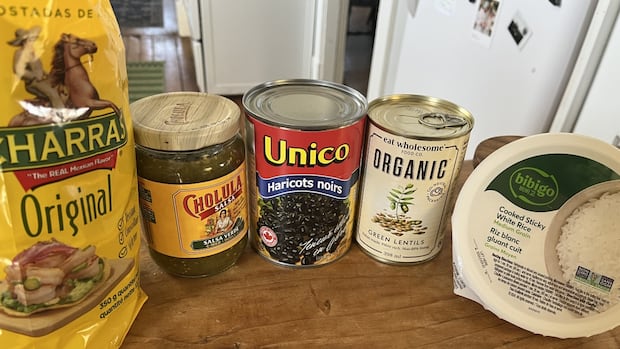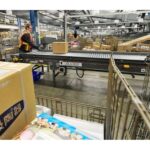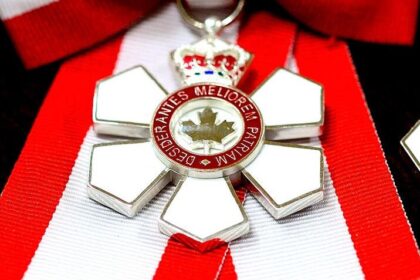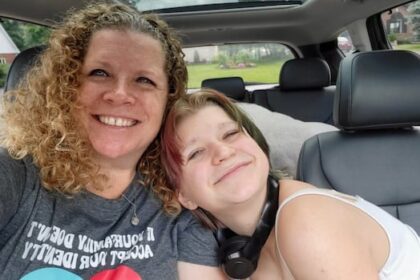PEI·COLUMNISTFreelance contributor Evelyn Bradley is no stranger to extreme weather. She grew up in the southern U.S., where floods and hurricanes are the norm. She’s learned that being prepared is about more than the necessities – it’s about maintaining a sense of normalcy in extraordinary circumstances.Freelance contributor Evelyn Bradley on finding comfort in small acts of self-care in the midst of chaosEvelyn Bradley · for CBC News · Posted: Aug 30, 2025 5:00 AM EDT | Last Updated: 2 hours agoSome of the staples for your emergency meals that we keep in our house at all times. (Evelyn Bradley)I moved to P.E.I. in 2020. That winter, a big snowstorm left the car almost completely buried and had us stuck in the house for days. On the second day, I realized I was not prepared for this type of weather.I grew up in the Southern U.S. I was used to thunderstorms, floods, and hurricanes. But not snow. Four days after the storm, some neighbours helped dig out the car, and I began to consider what we would need for future storms.When Fiona hit in 2022, a lot had changed since that first snowfall. I was more familiar with how to prepare for a hurricane thanks to my time in South Carolina, but it was clear the neighbours who had helped dig out our car were not as prepared. A lot of folks weren’t equipped to maintain any sense of normalcy during a natural disaster. Folks had canned goods, but no way to make food taste good. Some people had no way to shower, others didn’t have battery backups for their phones. This got me thinking about what I needed to prepare for inclement weather. I started by identifying what I need to navigate my daily routines, then distilled that down to the main components that help ensure normalcy in my household: power, food, water, and the small things that help me feel human.PowerWhen we think of a power source, many of us default to a generator. When Fiona hit, I was living in an apartment and there was no way a gas-powered generator was going to fit on our deck. I would need to get creative and work within my budget (we couldn’t afford a battery-powered generator at the time).Our emergency kit includes candles, bottled water, a battery generator, an emergency kit, walkie-talkies, quick-dry towels, rechargeable batters, extra lighters, a camp stove, fuel, and more. (Evelyn Bradley)I made a list of what I needed power for: communication, lights, and entertainment (in a world run on streaming platforms, this is a priority for us). Then I figured out what it would take to power those items for a few days.I charged my laptop ahead of the storm and downloaded shows, then used my computer as a backup charger for my phone. This kept my phone, in battery saver mode, running for several days. I accessed the news using low-data sites on my phone and a hand-crank radio. An external charger and headlamp round out the emergency kit. When I lived in rural P.E.I., we also kept candles, lighters, blankets and battery-powered lanterns on hand.Separate from our larger emergency kit, we keep a flashlight, small portable charger, hand crank radio, and headlamp that we can grab quickly in case of emergency. (Evelyn Bradley)Food and waterFood insecurity is a big stress trigger for me. That’s exacerbated in inclement weather, so being prepared helps me avoid additional trauma responses during already stressful situations. Diversify your fuel! I love barbecuing, and it can be a game-changer when the power goes out. Now, I was not in the parking lot of my apartment lighting a barbecue after Fiona. I used my butane stove outside. But knowing I had more than one source for cooking made it easier to ensure I had enough fuel to last me the duration of the outage. Meal planning: I’ve learned that if it’s not food I want to eat with the power on, I won’t be excited to eat it in the dark. The time to realize you don’t like canned ham isn’t when that’s all you have. I cook low-fuel or no-fuel recipes about twice a month, simplifying meals we already love. We love tacos, so a go-to power outage meal is tostadas with canned black beans, an egg, and jarred salsa. The trick is figuring out what you can make — and what will be most comforting — in stressful conditions. Stock up. Keep ingredients for your emergency meals in the house at all times. You don’t want to go to the store with everyone else the day before a storm. I always keep things like canned lentils, a jar of salsa, quick-cooking microwave rice, and canned beans on hand. Water: This was key when we lived in rural P.E.I. We needed to flush our toilets, wash dishes, cook, make coffee, and wash ourselves, plus water for our dog to drink. We filled up the bathtub with water to flush with, kept water bottles on hand, and filled up growlers for the rest. We also got water purification tablets, just in case (hot tip: include some water flavouring packets if you don’t like the way they make water taste). Make time to be human Our routines are essential, and planning for a power outage includes thinking about the small moments of self-care we can engage in regardless of the weather.I have a low-water wash routine in lieu of showering (this was essential when we lived in rural P.E.I.), and it helps me feel like myself. I keep old clothes on hand — loose-fitting, comfortable pieces that dry quickly and that I’m not worried about getting dirty. It’s a small thing that helps centre me in moments of chaos. For my wife, it means having a show she enjoys ready to go and enough water to wash her face.Our emergency kit includes water for our dog, Wynnoa, to drink. (Evelyn Bradley)When everything seems out of control, I find comfort in focusing on what I can control. Supplying a sense of normalcy goes beyond thinking about my physical needs – for me, the key to weathering these traumatic moments is to centre my whole self.ABOUT THE AUTHOREvelyn Bradley is a diversity, equity and inclusion consultant with Bradley Consulting in Epekwitk (P.E.I.), where she and her wife moved at the start of the COVID-19 pandemic. In her limited spare time, she cooks up well-plated meals and writes the occasional poem.
Why my emergency kit includes the things that make me feel human












